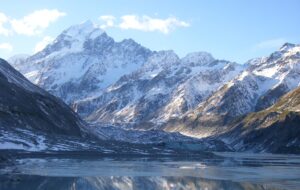If you’re a climber, you might be familiar with the threshold where your palms start sweating. I don’t mean when it happens while you’re climbing; it happens while you’re watching footage of climbing.
Starting from the first sickening time you watch free soloing, you build a tolerance. Over the years, you become used to watching climbers risk their lives. (You’re not going to see them die, right? This is YouTube…)
Maybe you try it yourself a time or two, with mixed results.
Having had all of this happen myself, the “no big deal” Honnold effect now firmly planted, I still experienced acute physical aversion watching Jonas Hainz solo “Moulin Rouge” (7b+/5.12c) in the Dolomites.
Planetmountain lauded Hainz’s bold, 400m ropeless effort, calling it “important”.
The most important thing I can see is not grabbing or stepping on the huge sheets of loose rock hanging from the cliff.
“Moulin Rouge” constituted a masterwork when Hainz’s father Christoph first free climbed it with Oswald Celva in the early 2000s. The 11-pitch route picks its way up a consistently steep, golden swath of Dolomite limestone on its way to a 2,806m summit in the Rosengarten group.
The route is not wildly hard by grade. Instead, it appears to stand out most intensely for the first ascensionists’ ability to find it among the crumbly, visually identical stone all around it.
From far away, the wall (called the Rotwand) just looks like a wall. Get as close to it as Hainz’s GoPro does, and you can see that most of it is a vertical stack of loosely bonded, fist-sized stones and thin wafers.
The footage produces a harrowing quality, despite being relatively average in terms of production. You won’t get sweeping, dramatic Alex Honnold-style hero shots that linger on Hainz’s consternated face. Instead, the drama of the ascent all comes from the wall itself — and the climber’s tenuous balance on its surface.
Which is what free soloing should be, right? Especially if you’re looking to indulge in the palm sweat effect.






